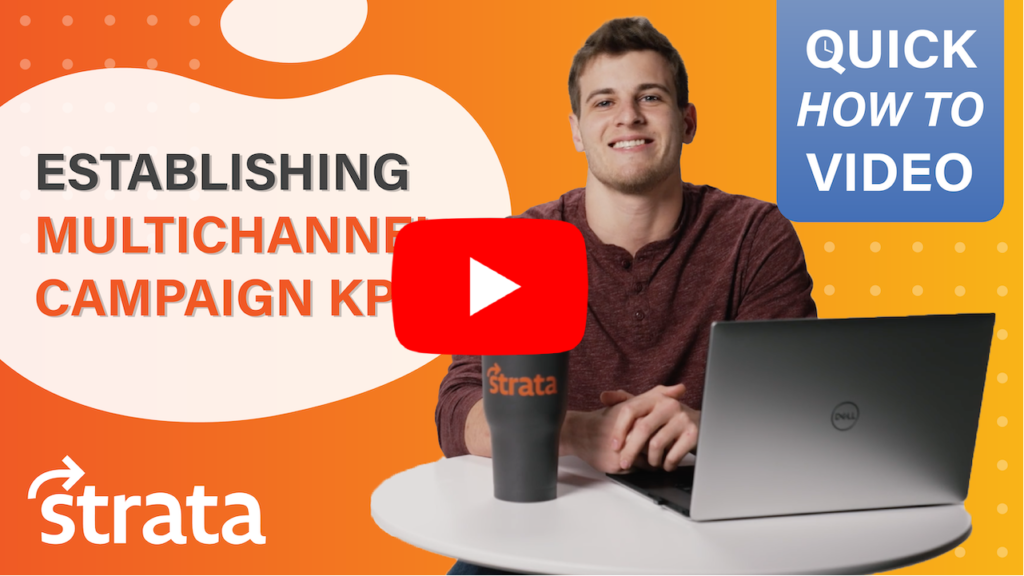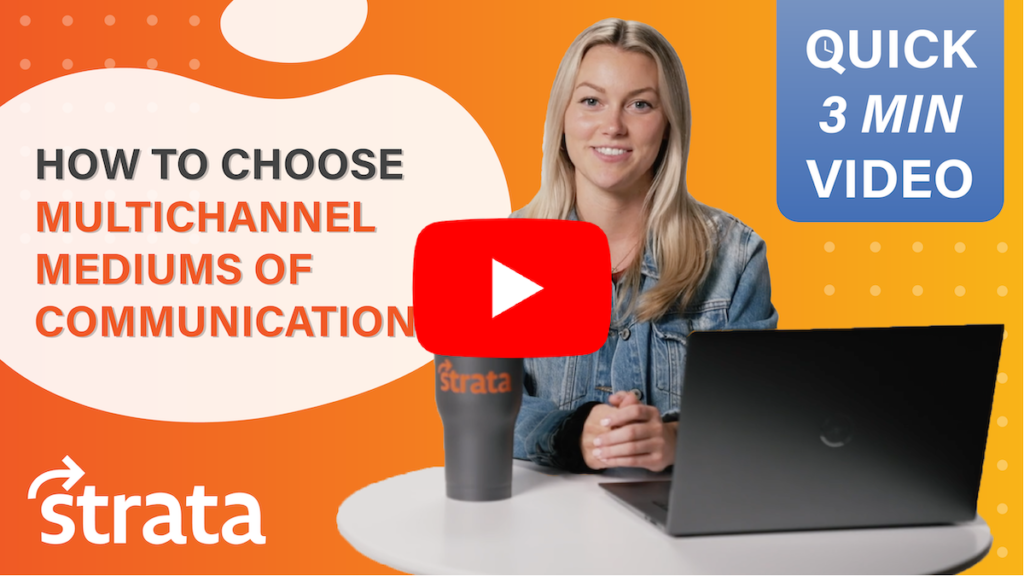A Strata YouTube Channel Original
In this ever-changing market, not even a marketing genius can accurately gauge performance of a multichannel campaign without organized, analyzed data across channels. That is why setting and tracking key performance indicators (KPIs) is very important. Follow along as we walk you through a few things to keep in mind when establishing and understanding KPI’s for your multichannel campaign.
What’s a KPI?
Like we said above, KPI stands for key performance indicator. It’s a quantifiable measure of performance over time for a specific goal. In this case – that goal is multichannel marketing success. KPIs lay out marketing goals in the form of specific milestones to calculate progress and insights, and these insights help marketers make better decisions. In order for KPIs to be successful and helpful, a marketer or team of marketers needs to handle and record analytics from several touch-points. Without KPIs there’s no way to accurately and effectively measure the efficiency of your multichannel performance.
KPIs at Their Core: Layer One
There are two levels of KPIs for multichannel campaigns. The first layer is the component layer, and it’s used to analyze the individual components of a campaign. This layer helps establish realistic goals for the campaign and provides low level insight to analyze and optimize as your campaign progresses. Conversion rates vary by standards like industry and medium, which are easily researchable.
Yet, actual conversion rates have huge ranges based on the nature of your call to action – like your messaging, imagery, and your audience, and which segment of the funnel they’re in. If your campaign’s messaging can be considered “industry standard”, save yourself some time and use an average conversion rate, even if it looks low.
Further into KPIs: Layer Two
Want to learn about the second layer of KPIs, and how to establish them for your next multichannel campaign? Click on the video below and hear more from our Director of R&D, Harrison. Or, if you’d like to discuss this concept with one of our multichannel experts, contact us today to get your next (or maybe your first) multichannel campaign started.
A Strata YouTube Channel Original
Choosing the right multichannel campaign mediums can be difficult if you don’t have a good starting foundation and the right tools. That’s why, in our most recent YouTube video, we walk you through the key things to keep in mind when making this decision, and how to pick channels that best fit your company’s marketing needs.
Evaluate Your Brand & Customers, First
Before you even look at where your audience is and what they want, look at your own brand, brand voice, offerings, and then your target audience. Once you have these nailed down, then you can think about your customers – because if you understand your customers, you can understand where it’s best to communicate with them. Get to know your customers on a deeper level through data and tracking so you can develop personas and demographics, and fully recognize their pain points, wants, and needs. Test and measure tactics, update and reaudit your customer experience, ask for customer feedback – whatever you need to do to truly know your audience and therefore get the most out of your multichannel campaign. After all, 86% of customers are willing to pay up to 25% more for products and services just to have a better customer experience. Once you know your audience, then, and only then, can you figure out exactly where to meet them on their multichannel journey.
If you want to know what comes next in choosing the right mediums of communication for your multichannel marketing campaign, click on the video below and hear more from our Marketing and Social Media Coordinator Bridget. Or, if you’d like to discuss this concept with one of our multichannel experts, contact us today to get your next (or maybe even your first) multichannel campaign started.
A Look at Some of Our Favorite Customer-Focused Campaigns
Although we could write several blogs about all the great marketing campaigns that inspire and motivate us to be the best marketers possible and make the most effective material – in this blog, we’re looking at a few that we really admire because of how relatable and real they are. We’ll be breaking them down, thinking through what made them so successful, and in turn – helping you brainstorm your next campaign. Follow along as we dive into these customer-centric campaign leaders.
Apple’s #ShotoniPhone Campaign

No matter where you’re located – you’ve likely seen this one around town. On billboards, buses, signs, or online. iPhone and Apple’s popularity is pretty known, but what we didn’t know when the iPhone first became popular was that it would eventually completely replace the digital camera. And that’s what this campaign shows; that you can take photos with your iPhone that are as beautiful as a camera that would cost you thousands. That’s great and all, but that alone would not convince people of today. So, why’s this campaign so successful? It gets real people involved. It’s relatable. The photos are not only from real Apple customers – but include their names. If someone wanted to, they could look up the name of the person in the bottom corner associated with taking the photo and learn more about who that person is. The best part? Not all of these people are photographers, showing that anyone could use the iPhone to take great photos. This tactic is pretty genius and builds trust – as no one would really care if it was simply a generic photo that easily could have been taken on a Canon. “According to various studies, over half (51%) of Americans trust user-generated content more than other information on a company website and claim that it influences what they buy and where they buy it from.”
Coors Light’s #CouldUseABeer Campaign
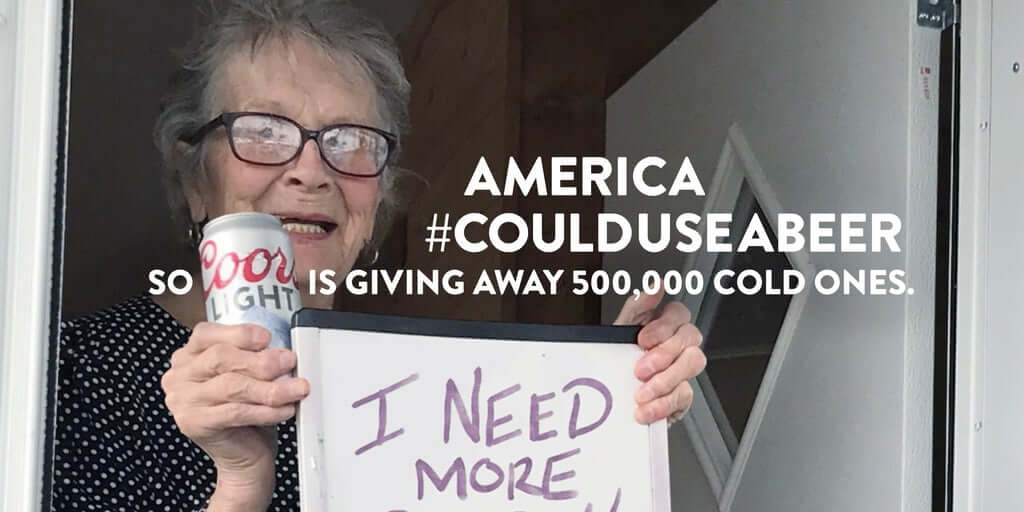
Another campaign that spoke to the general public and got them involved during a difficult time? Coors Light’s #CouldUseABeer. After a photo of a quarantined, 93-year-old woman asking for a beer went viral, Coors Light engaged with its audience by offering free six packs to anyone who was tweeted about (who – you guessed it, could use a beer). This tactic of giving away free items may seem pretty crazy, but it can go a long way. Although Coors Light gave away over 500,000 beers, their name was tweeted about again and again, which led them to trend, and boosted their reputation in a time of need.
American Apparel’s Direct Email Marketing
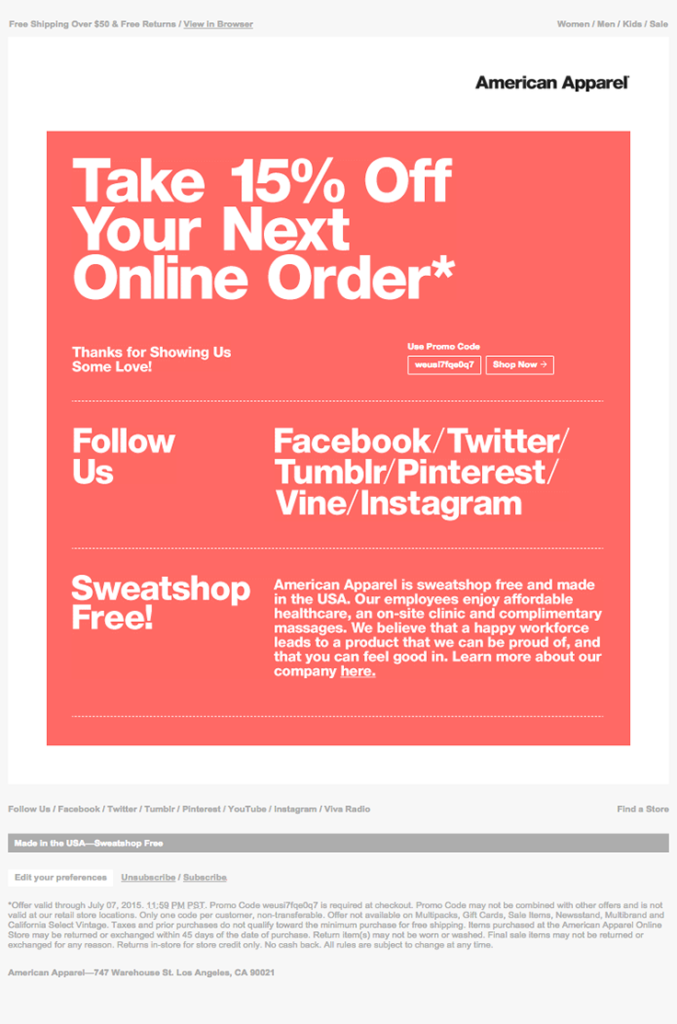
Known for being trendy and modern, American Apparel is no stranger to effective, up-to-date, customer-centric marketing. We’re specifically impressed with their to-the-point email marketing. No frills, no fluff – just what the customer wants (sales, discounts, and freebies). American Apparel always ensures that there’s no guesswork for their customers. Simple and sleek, their emails are call-to-action forward without being in-your-face.
Mercedes’ “Like You” Campaign

How do you relate a high-end brand to a broader audience of customers? Relate it to them, literally. Mercedes’ “Like You” campaign did just that. Called to several different types of audiences with phrases like, “Detail-obsessed, like you”, “Groundbreaking, like you”, “Original, like you” and “Curious, like you”. And not only was this phrasing compelling, but consistent. For the span of the campaign, potential customers could find the phrasing on billboards, signs, online ads, and on tv. The consistency was key, in that potential customers began to associate themselves with the brand and possibly even buy a Mercedes.
Airbnb’s Use of User Generated Content

Similar to Apple’s tactic, Airbnb uses the photos, videos, and feedback of its customers in its campaigns to promote beautifully classic or uniquely interesting places to stay. “Millennials spend 30% of their media time (5 hours/day) engaged with user-generated content (UGC). Coincidently, this is the same generation that drives Airbnb’s success in the sharing economy.” Airbnb keeps things personal and personalized by including its audience, which facilitates a happy and loyal community of customers.
Coca Cola’s Share a Coke Multichannel Campaign
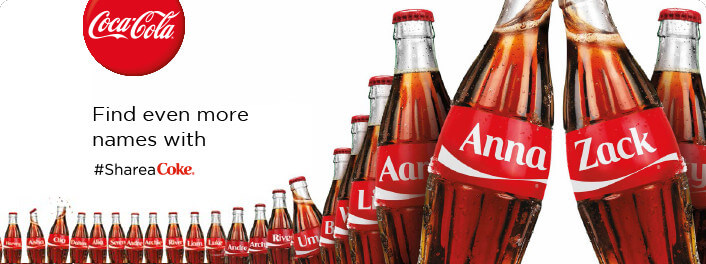
We all know this one. There’s nothing more personal than having your own name on a Coke bottle – which is exactly what Coca Cola did for its ongoing “Share a Coke” campaign. Whether you customize your bottle or simply find your name in store, you’re likely to share it with the world through text, email, on social, you name it (no pun intended)! And its rollout in 2011 sure worked in building brand awareness, boosting sales, and creating positive brand recognition, as “Young adult consumption increased significantly during the campaign, up by 7%, making 2011 the most successful summer ever. The campaign earned a total of 18,300,000-plus media impressions.”
Spotify’s #2020Wrapped Campaign
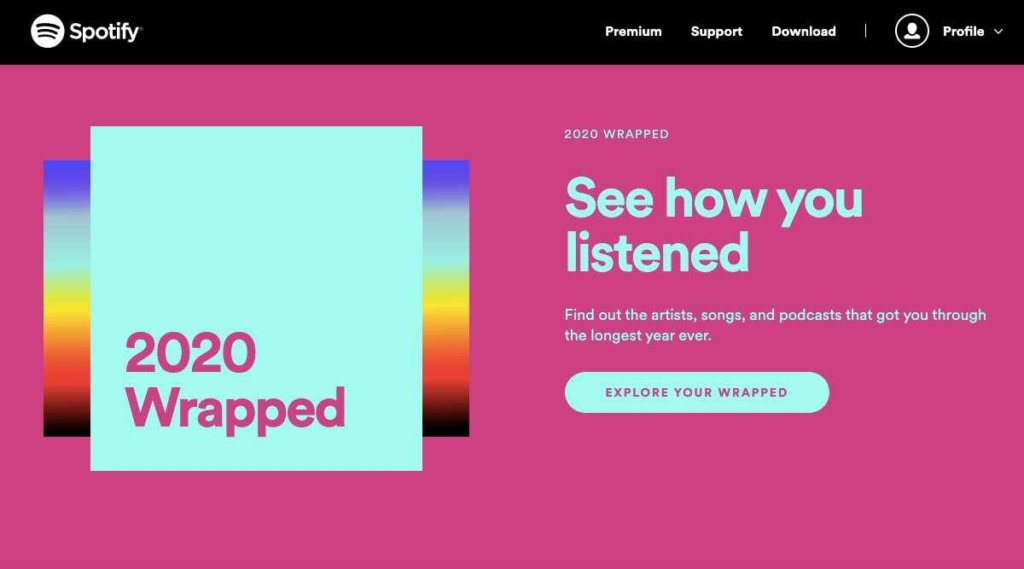
If you have any form of social media, you’ll likely remember this campaign flooding your feed, and maybe you even took part in it. At the end of 2020, Spotify allowed its customers to see their year of music with “2020 Wrapped”, which compiled their listening into a lovely array of photos and stats. Viewers loved seeing their personal data compiled into a nicely packaged marketing piece – and loved sharing their interests with others. Smart on Spotify’s end, because it not only gave them free marketing, but boosted their recognition.
So, What Have We Learned?
If you haven’t noticed, most of these campaigns share one key factor; relatability. How can you use relatability to create effective campaigns, too? Know your audience. Before even starting to brainstorm a campaign, make sure you’re fully aware of who, where, and when you’re targeting. And when you do start your campaign based off your findings, use that data and understanding to carefully craft consistent messaging that includes clear call-to-actions and personalized, catered content. Use hashtags, giveaways, QR codes, PURLs, BRCs, and more to engage with your audience and include them in your campaign. And, when and if appropriate, sprinkle in some humor.
Interested in making an impactful, relatable campaign that can help boost your company’s marketing efforts? Not sure exactly where to start? Look no further. Strata’s here to help. Contact us today to get the brainstorming started.
San Antonio, Here We Come!
At Strata, one of our favorite things to do is talk marketing. We’re problem solvers, and we pride ourselves on helping industries overcome their marketing challenges. With healthcare marketing being one of our many specialties, we’re excited to announce that the Strata team is heading back to the annual SHSMD Connections Conference in San Antonio, Texas from September 19th-21st, and we couldn’t be more excited!
SHSMD? What’s That?
For those who’ve never heard of SHSMD (aka the Society for Health Care Strategy & Marketing Development), it’s an AHA professional membership group that focuses on how the industry can evolve and change with new strategies, marketing, and technology, serving more than 4,000 members.
This year, SHSMD is celebrating the 25th anniversary of their annual “Connections” conference, and we can’t wait to connect with some of the industry’s best marketing and communications strategists. It’s been two years since we’ve been able to interact with these professionals in person, and we’re excited to be able to once again inform, challenge and validate their thinking, while also learning from the conference’s guest speakers from all over the country.
What We’re Looking Forward to & What We’re Bringing
This isn’t our first rodeo (even though it’s our first time going to Texas), as we’ve attended this conference for 20+ years. However, this will be our first time back with a refreshed look, thanks to our 2020 brand refresh. As marketing experts with almost 30 years of experience, we’re excited to bring our expertise to the show, and create some new, long-lasting relationships.
It’s clear that the healthcare landscape is evolving faster than ever, and to stay competitive, hospital systems need to start looking at marketing as a strategy rather than an afterthought. We plan to go into the show with an open mindset and to educate healthcare industries on the importance of New Mover Marketing and how SmartMove can help them achieve their patient acquisition goals.
If you don’t know who (or what) we do, Strata offers a wide range of client-driven solutions to help companies solve complex marketing and communications challenges. We’re a lot of things (innovators, go-getters, marketing experts), but we’re people first—and we know you are, too. That’s why we believe the best way to help a business achieve its marketing goals is by focusing on the people who work there.
Learn More
If you’re attending this year, stop by booth 216 to learn more about how Strata can help you with your marketing efforts. We can’t wait to meet you!
If you’re not attending the upcoming conference- no worries. Contact us today to discuss your own personal marketing plan from the comfort of your own home.


